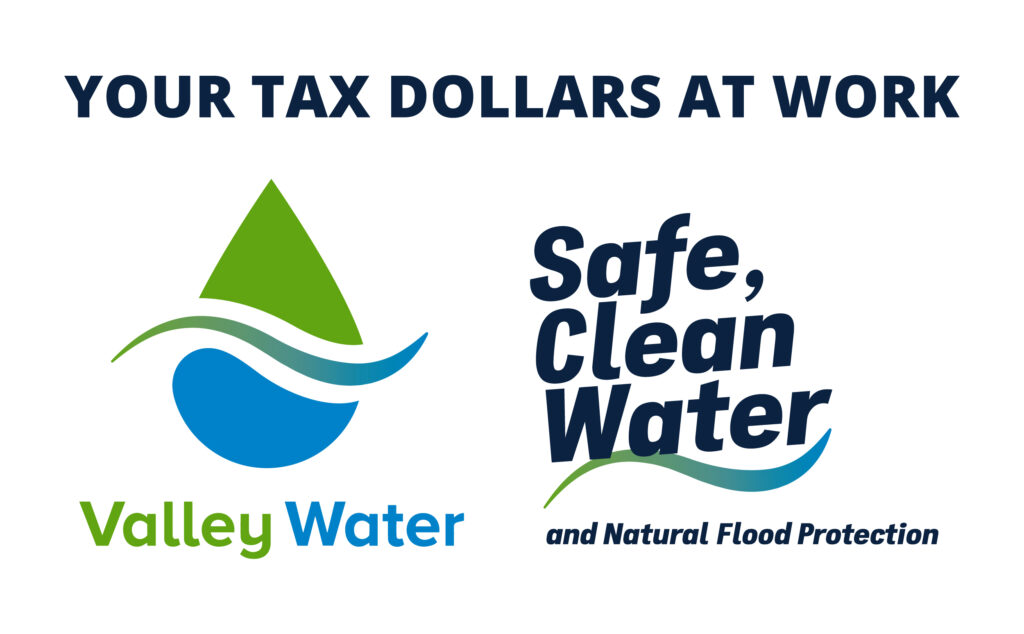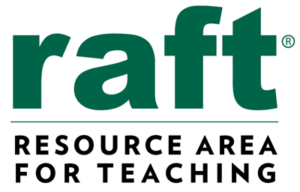This unit was developed thanks to generous support from the Santa Clara Valley Water District

How do people get access to freshwater? Why is freshwater so important? How does freshwater get moved to arid regions? Students explore these questions and more as they work in teams to engage in lessons and a culminating design challenge where they design, build and test a scaled model that can transport fresh water over a distance with no human contact in between locations. They have the opportunity to demonstrate their models and explain how they work.
Educational Outcomes
- Students conduct research to understand the importance of access to fresh water
- Students investigate, compare, and explain different methods for transporting fresh water
- Students apply the design process to solve a real-world problem
STEAM Integration
Students conduct research to better understand the importance of freshwater and common problems in transporting it. They develop empathy around the design problem and inform their efforts in the design process. They document their progress and as they work on their design solutions.
Standards
NGSS 3-5-ETS1-1: Define a simple design problem reflecting a need or a want that includes specified criteria for success and constraints on materials, time, or cost.
NGSS 3-5-ETS1-2: Generate and compare multiple solutions to a problem based on how well each is likely to meet the criteria and constraints of the problem.
CCSS ELA W.5.7: Conduct short research projects that use several sources to build knowledge through investigation of different aspects of a topic.
Unit Materials
This unit can be completed using the RAFT Makerspace-in-a-Box kit. The kit contains many items with various attributes useful for different purposes such as rigid items (e.g. craft sticks, cardboard tubes), flexible/cuttable items (e.g. foam, straws), and connectors (e.g. binder clips, stickers). Some lessons call for additional items not included in the kit. We encourage facilitators to provide other creative materials for student exploration. Questions? Email us: education@raft.net
Maker Journal Pages
Students can record their learning in Maker Journal pages, sheets containing tasks and prompts specific to each lesson/design challenge. These sheets encourage students to reflect on their learning throughout the unit and can be used as part of a larger student portfolio to demonstrate growth in concepts/skills. Maker Journal pages can be printed out or copied by students in a bound notebook.
Tips for an Active Classroom
Communication is critical in the design process. Allow students to talk, stand, and move around to acquire materials. Help them become successful and care for the success of others by asking them to predict problems that might arise in the active environment. Ask them to suggest strategies for their own behavior that will ensure a positive working environment for all students and teachers.
Design Thinking Overview
Our integrated STEAM units incorporate a non-linear design process. Each phase is repeatable so students can iterate while developing a deeper understanding of the core concepts. The phases of the design process are:
Empathize: Work to fully understand the experience of the user
Define: Process/synthesize findings from empathy work to form a user point of view
Ideate: Explore a wide range of possible ideas for solutions
Prototype: Transform ideas into a physical model with which to learn and interact
Test: Refine prototypes, learn more about the user, and refine original point of view
The Importance of Freshwater (60 min)
Learning Targets
- Conduct research using several sources
- Identify facts on freshwater transport and its challenges
Essential Questions
- What is freshwater? Why is it important?
- How can freshwater be transported (moved) to different areas
Lesson Materials
- Chart paper or whiteboard
- Markers, pens/pencils
- Computer or mobile device
- Internet access
- Web resources: The Big Bag Theory (4:10) | Balancing Water Demand (3:25) | Water Pipeline (10:19) | Ancient Water Transport Example (3:25)
LESSON PROCEDURE
- Draw a large t-chart on chart paper or whiteboard with the headings “What is freshwater?” and “How do we move it?” Ask students to share their prior knowledge about freshwater by asking these questions and recording their responses in the chart.
- Clarify understanding with a few facts about freshwater (see sample student teacher dialog below).
- Show students images of drought. The images could be from the past or present, from a specific region of the world or more local. You may want to select images from a Google Image search on the topic. Ask students, “How could we transport water to areas like these?” Record their responses.
- Form groups of 3-4 students or allow them to form their own groups.
- Tell students they will be doing some research on freshwater (see sample dialog) and record their work in the lesson maker journal. Ask them where they might find information on freshwater.
- Consider selecting a few images of uses of water, drought, and results of the water crisis. Model good techniques for safe quality internet searches. Consider selecting sites that yield quality information for the topic. Review some of them together as a class.
- Assess by evaluating the information on freshwater and transport shared by student groups (see suggested assessment below).
Sample teacher and student dialog
T: Share these facts with students after first assessing their prior knowledge: “Freshwater is essential for life. Plants, animals, and humans all need freshwater to survive. We use freshwater for drinking water, irrigating crops, sanitation systems, and in industrial factories, to name a few. Water used up from groundwater, rivers and lakes is replenished by rain and snowfall.”
“About 70% of Earth’s surface is covered in water. Of all the water on Earth 97% is in the oceans. That only leaves 3% as freshwater. Of that small amount of freshwater almost 2% is locked up in glaciers and ice at the North and South poles. The remaining 1% of freshwater is mostly groundwater, with a small fraction filling the world’s lakes and rivers.”
T: “We are going to conduct research, inquiring about the importance of freshwater and the various methods for transporting fresh water. Let’s think of ways that we could look for this information.”
S: “Internet search, Wikipedia, image search, google maps, maps and other resources in our library.”
T: “These are all great suggestions! Use these tools and your maker journal to record your findings. Be ready to share!”
Assessment
Student groups discuss and compare their findings, sharing different critical uses for water and methods of freshwater transportation they found in their research. They should also share any difficulties they discovered in transporting freshwater.
Design Challenge: Freshwater Transport System (90 min)
Student teams apply their learning about freshwater transport to a real-world scenario by designing, building, and testing a water transport system that can move a quantity of water across a distance (facilitator and/or students determine liquid volume, distance, and build time values). Examples of scenarios include transporting water to remote California farms, desert communities, and moon colonies.
Design Prompts
- Choose a real-world scenario where your design serves as the solution
- Design, build, and test your freshwater transport system that meets criteria and constraints (below)
Materials
- RAFT Makerspace-in-a-Box
- Chart paper or poster paper
- Markers, pens, pencils, tape, scissors, staplers, hole punches, rulers, paper clips, binder clips
- Plastic graduated containers, syringes, flexible clear tubing
- Cups, funnels, straws, other pipe or trough-like items
- Paper towels, water
- Computers or mobile devices, internet access
LESSON PROCEDURE
- Present and explain the design prompt(s) for the challenge (above).
- Review and define the criteria and constraints listed below and these terms: iteration, prototype, system. Alternatively, you can define them together as a class.
- Assign student teams or assign students to specific groups.
- Students follow steps in the design process and record their progress in the Maker Journal.
- Students share and compare their designs, reflect on their data/calculations, and provide feedback for improvement.
The criteria and constraints for this challenge are listed below. Criteria are the requirements for the design or its expected functions/abilities. Constraints are limitations on the design such as time, space, available materials, etc. The criteria and constraints are also listed in the Maker Journal for this challenge.
Criteria & Constraints
- System moves quantity of water across a certain distance (facilitator and/or student discretion)
- System transports water with minimal assistance
- System built using 6 or more different materials
- Data is collected and recorded for each test
- System completed on time (facilitator and/or student discretion)
Ideate Phase
During the ideation phase students should have ample time to discuss and research their ideas. All ideas are welcome and students should be encouraged to think big. Students capture their ideas using the Maker Journal. Students may return to this phase as many times as needed. They choose the real-world scenario and user for whom they are designing the transport system. Students discuss, draw and list possible solutions for making a scaled transport system and the team chooses the best solution.
Prototype Phase
Students build a rough prototype of the design they will test and improve. Build time should be quick and designs should be kept simple. Students may also experiment with solutions that focus on changes in behavior. For example, students might create a transport system that might be better than current systems and could encourage people to adopt the design. Students use the Maker Journal to record their progress. Students may return to this phase as needed.
Test Your Design
Students evaluate their designs in the Maker Journal. They determine if their system can transport water according to the criteria and constraints. Focus on brevity and conduct tests at a brisk pace. Students should revisit ideas, build prototypes and evaluate their designs often (iteration, optimization). Students may return to this phase as needed.
Assessment
Student groups discuss and compare their solutions and give each other constructive feedback (suggestions for improvement). Conduct a whole group discussion to allow all students to share, discuss and compare their solutions and ideas. Help students focus their thinking on the data collected and interpreting its meaning in the context of the defined real-world scenarios and intended users.
